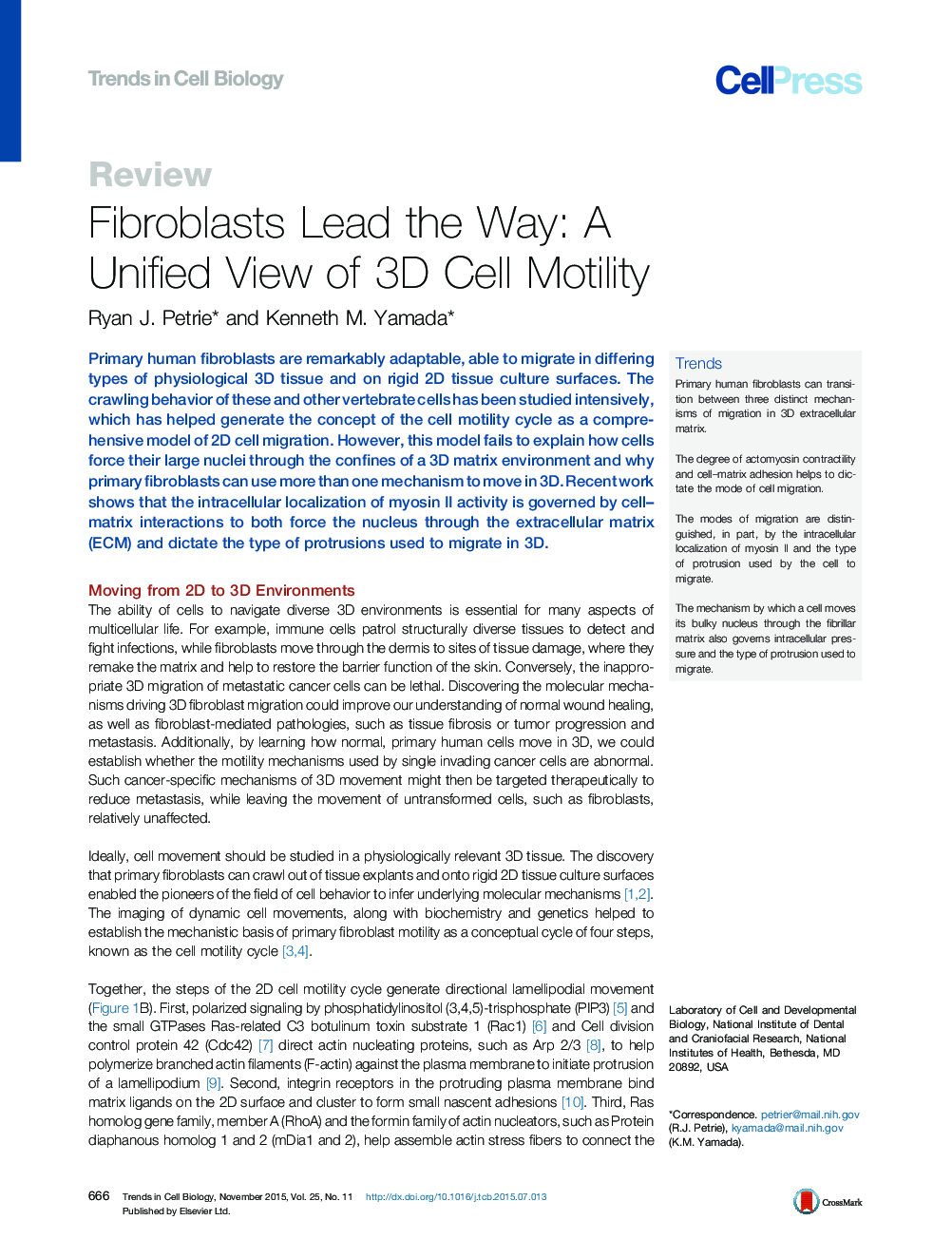| کد مقاله | کد نشریه | سال انتشار | مقاله انگلیسی | نسخه تمام متن |
|---|---|---|---|---|
| 2204282 | 1100765 | 2015 | 9 صفحه PDF | دانلود رایگان |

Primary human fibroblasts are remarkably adaptable, able to migrate in differing types of physiological 3D tissue and on rigid 2D tissue culture surfaces. The crawling behavior of these and other vertebrate cells has been studied intensively, which has helped generate the concept of the cell motility cycle as a comprehensive model of 2D cell migration. However, this model fails to explain how cells force their large nuclei through the confines of a 3D matrix environment and why primary fibroblasts can use more than one mechanism to move in 3D. Recent work shows that the intracellular localization of myosin II activity is governed by cell–matrix interactions to both force the nucleus through the extracellular matrix (ECM) and dictate the type of protrusions used to migrate in 3D.
TrendsPrimary human fibroblasts can transition between three distinct mechanisms of migration in 3D extracellular matrix.The degree of actomyosin contractility and cell–matrix adhesion helps to dictate the mode of cell migration.The modes of migration are distinguished, in part, by the intracellular localization of myosin II and the type of protrusion used by the cell to migrate.The mechanism by which a cell moves its bulky nucleus through the fibrillar matrix also governs intracellular pressure and the type of protrusion used to migrate.
Journal: - Volume 25, Issue 11, November 2015, Pages 666–674